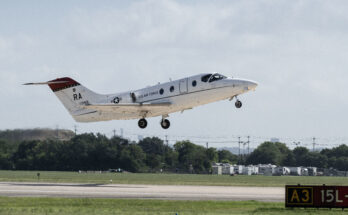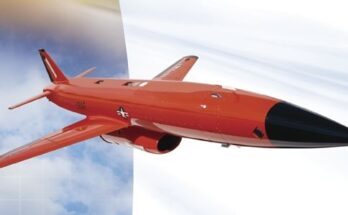
The UK’s Defence Science and Technology Laboratory (Dstl) is making significant strides in bolstering its Counter-Unmanned Aircraft Systems (C-UAS) capabilities with the development of a Radio Frequency Directed Energy Weapon (RFDEW) system. This technology aligns with the recent increase in defense spending, aiming to position the UK’s defense industry at the forefront.
The RFDEW system offers the ability to detect, track, and neutralize a wide range of threats across land, air, and sea. With a current operational range of 1 kilometer and ongoing development pushing for further extension, the system disrupts or damages critical electronic components of enemy vehicles through targeted radio waves. This can bring down drones or disable other electronic systems, effectively stopping them in their tracks.
One of the most compelling aspects of the RFDEW system is its cost-effectiveness. Compared to traditional missile-based air defense systems, the RFDEW offers a significant advantage. At a mere 10 pence per shot, it provides a highly economical solution for tackling dangerous drone swarms with immediate effect. Additionally, the system’s high automation level allows for single-person operation, reducing manpower requirements.
Project EALING unveiled: the Radiofrequency "cannon" in development for the British Armed Forces seen with 7 Air Defence Group at Thorney Island. A lot different from the early concept art, it is shown carried on a smaller HX60 truck rather than an HX77 and is visibly demountable pic.twitter.com/C8HRsL0x89
— Gabriele Molinelli (@Gabriel64869839) May 7, 2024
RFDEW technology can be mounted on a variety of military vehicles and uses a mobile power source to produce pulses of Radio Frequency energy in a beam that can rapidly fire sequenced shots at individual targets or be broadened to simultaneously engage all threats within that beam.
The advanced technology is being developed by a joint team from the Defence Science and Technology Laboratory (Dstl) and Defence Equipment & Support (DE&S), working with UK industry under Project Hersa. The next steps for RFDEW is undergoing extensive field testing with British soldiers over the summer.
A military history enthusiast, Richard began at Forecast International as editor of the World Weapons Weekly newsletter. As the Internet grew in importance as a research tool, he helped design the company's Forecast Intelligence Center and currently coordinates the EMarket Alert newsletters for clients. Richard also manages social media efforts, including two new blogs: Defense & Security Monitor, covering defense systems and international issues, and Flight Plan, which focuses on commercial aviation and space systems. For over 30 years, Richard has authored the Defense & Aerospace Companies, Volume I (North America) and Volume II (International) services. The two books provide detailed data on major aerospace and defense contractors. He also edits the International Contractors service, a database that tracks all the contractors involved in the programs covered in the FI library. More recently he was appointed Manager, Information Services Group (ISG), a new unit that encompasses developing outbound content for both Forecast International and Military Periscope.



